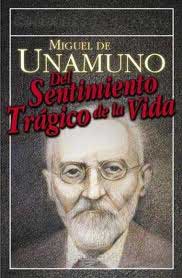
VATICAN CITY — For many Roman Catholics, it has been a tradition to mark momentous life events — marriages, baptisms, milestone birthdays and anniversaries — with a special Vatican keepsake: a personalized Papal Blessing on parchment.
Yet in recent days, curses — not blessings — have been heard on the streets around the Vatican, after dozens of souvenir shops and calligraphy studios that had for decades produced the apostolic benedictions for the church were told that, as of Jan. 1, the Vatican would be making all the parchments itself.
The decision was motivated by a “desire to return to the origins” of the Papal Blessings: to raise funds for the pope’s personal charitable donations to the poor, and to ensure that the Vatican’s Office of Papal Charities, the Elemosineria Apostolica, “has sufficient resources” to be even more charitable, the Vatican explained in a letter sent to the parchment sellers this year.
The Vatican also wanted to rein in what it perceived as the over-commercialization of the parchments and to ensure that the service returns to “the sole and only charitable aim for which it was intended,” Archbishop Konrad Krajewski, the pope’s almoner, who dispenses charity on behalf of the pontiff, wrote in the letter.
The revocation of what Roman vendors have over the years come to see as their right has created outrage as well as concern that they will soon be on the receiving end of that charity if the Vatican takes away their livelihood.
“It’s a devastating decision,” said Paolo Pensa, a calligrapher, whose father, Rino, began producing parchments 65 years ago. By his estimates, the loss of work could put some 500 people out of business, including calligraphers, painters and artisans.
Another vendor, Bruno Del Priore, whose father sold parchments, said he still had not told his 99-year-old mother, who had also worked in the family business, for fear of breaking her heart. “I’ll have to let people go,” he said.
In a statement on Friday, a group of parchment vendors accused the Vatican of effectively creating a global monopoly, and reminded the pope of his own words, spoken to a group of workers whose jobs were at risk because of downsizing, during a general audience in St. Peter’s Square last month: “Who — for the sake of money, or business, or to earn even more — takes away work, know he takes away the dignity of the person,” the pope said.
Though the office of the papal almoner dates to the 12th century, Papal Blessings on parchment began to be issued only about 100 years ago under Pope Leo XIII.
The benedictions come in various styles and sizes to suit a variety of occasions, including priesthood ordinations or the decision to enter religious life. Most feature a photograph of the current pope and are decorated with images, like the Virgin Mary, gothic-style symbols or the facades of the four principal basilicas of Rome. The personalized blessing part of the memento is scripted in ornate fonts. Prices vary, according to the human labor the parchment required; some of the parchments, particularly the lower-cost ones, are computer-generated.
Through the Vatican, the cost of a parchment ranges from 13 to 25 euros, or about $16 to $31, depending on the model. But through private vendors, prices easily top €60, or $75, for the more elaborately handcrafted exemplars, even though the Vatican officially capped the top price at €26, or about $33.
Business has always been brisk, but orders increased by 50 percent last year, in part because of the new pope’s popularity, Vatican officials said, but also because the parchment service went online. Recently, credit cards were accepted for payment.
To be authentic, the parchment must be signed by the almoner and must bear the seal of his office, a service for which the Vatican charged about $3.75. Of the 337,000 parchments authenticated in 2013, 142,000 were produced outside the Vatican.
The almoner’s office last year distributed some $1.5 million to charitable causes in response to around 7,000 requests for aid, mostly in small gestures, like paying bills for needy families, or building showers in a derelict building on the outskirts of Rome illegally occupied by hundreds of African refugees.
“The office is an expression of the pope’s personal attention to the poor,” said Msgr. Diego Ravelli, of the Office of Papal Charities. “It is charity by the pope’s own hand, simple and silent.”
That purpose seems to have gotten lost over time, the monsignor said. In too many cases, papal blessings were offered in shop windows, “like so many salamis,” he said.
“People should know that they’re not paying for a parchment — they are making an offering to the pope’s charity,” Monsignor Ravelli added. “Naturally a merchant is a merchant,” but “the €3 paid to the Vatican is really a small percentage with respect with what the vendors are earning.”
The collaboration with private vendors dated to a time when all the parchments were done by hand, and the office could not keep up with demand.
Monsignor Ravelli said he was certain that his office could keep up with the increased workload. The team of in-house calligraphers would be helped by private collaborators, as well as by cloistered nuns. “That’s another act of charity, because they mostly live off the pensions of the older nuns and have no other sources of income,” the monsignor said.
The office’s only aim “is to help as many people as possible” with the expected increase in income, he said.
That is not how it is seen on the other side of St. Peter’s colonnade.
“Now that they’re selling through the Internet, the Vatican wants to take everything, ” said Mario, who works in a souvenir shop with a view of St. Peter’s and declined to give his last name. “It’s going to be a huge business for them.”
Lorenzo and Giulio Savelli, who run a large souvenir shop on St. Peter’s Square, wrote to the pope in July offering a compromise: Allow people to continue buying parchments from stores, but give them the option of adding a separate offering to the pope.
“It would remove the unpleasant notion that you’re buying a benediction, which is how people now see this,” Giulio Savelli said. “If they sell the parchments directly, it’s only going to appear that they’re out to make more money.”
The pope has not responded so far.
But alongside the big souvenir stores that sell a wide array of Vaticanalia are small mom-and-pop shops where selling the blessings keeps them afloat, the owners said.
“We live off this; if they take away the parchments there’ll be two more old people on the streets,” said Maria Mocnik, who has been dealing in Vatican blessings since 1958. Her husband, who is retired, comes by to help in the afternoon.
Her tiny, dusty souvenir shop is just off the tourist track, and most of her business — lower-end parchments sold for about $13 — comes from priests and nuns who have “known me for decades.” Without the parchments, she said bitterly, “I’ll be forced to shut shop.”
“I am putting my faith in God’s will,” Ms. Mocnik said. “The big stores are already rich, and losing the blessings won’t mean anything. As with everything, the ones who will suffer most are the poor.”



























